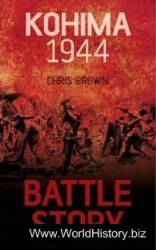Maritime archaeology involves recovering the archaeological information through survey, excavation, recording, and documentation. The theoretical questions which then have to be addressed relate to the interpretation of this information, first at a more particularistic, object-oriented level, and, by extrapolation, to the deeper patterns of cultural systems.
There are several schools of thought governing maritime archaeological research. Historical particularism studies the material culture and is artifact-orientated and concerned with the artifacts and their functions. This approach is particularly appropriate for the archaeology of shipwrecks, because, being a relatively new field of study, the material artifacts are often not well understood. It is important, therefore, to build a clear understanding of the function of the material before the interpretation can take place. It has been stated that one of the most important objectives for maritime archaeology is simply to build up catalogs of material from wreck sites in order to create a springboard for the generation of hypotheses. Other approaches involve the development of hypotheses that can be used to study societies and the way they operated. More recently, with sites belonging to the post-medieval period, the use of an integrated approach has been widely used. Here, both the archaeological and historical records are combined to attempt to obtain a clearer overall picture. For example, many items will not appear in the archaeological record of a shipwreck; perishable items may disappear, the origin and destination and the reason for the voyage may not be known; conversely, the historical record may not record items on board the ship or the way the ship was built and its type. Through the careful integration of both sources a much more informed picture can emerge, providing a deeper understanding of the significance of the site. Obviously, this is not always possible, but it is clear that an integrated approach will produce a better result.
Post-excavation research will initially focus on the artifacts through their classification and identification. At this first level, the objective is identification, to which end scientific techniques may be applied to assist in determining the type of material the object was made of and its dating. Additionally, the historical record may be helpful in the identification and dating of objects where there are contemporary descriptions of similar material. At the next level, the archaeological research becomes involved with the interpretation of the function of the object and its relation to the other objects on the site. For sites that have a supporting written record, the documentary evidence can be very important, since it can provide information to explain why particular objects were present and what their function was. The final stage is reached with the study of the pattern of the material in relation to other sites and its relevance to broad historical interpretation which then leads to the formulation of the theories or hypotheses that can be used to explain major trends or processes. Irrespective of which theoretical framework is adopted, the objective of a maritime archaeologist will be to find out as much as possible about the material. This can then be used in conjunction with other information of a similar or associated nature to gain a broader concept of its significance on the site and, subsequently, its relevance in broad historical terms.




 World History
World History









